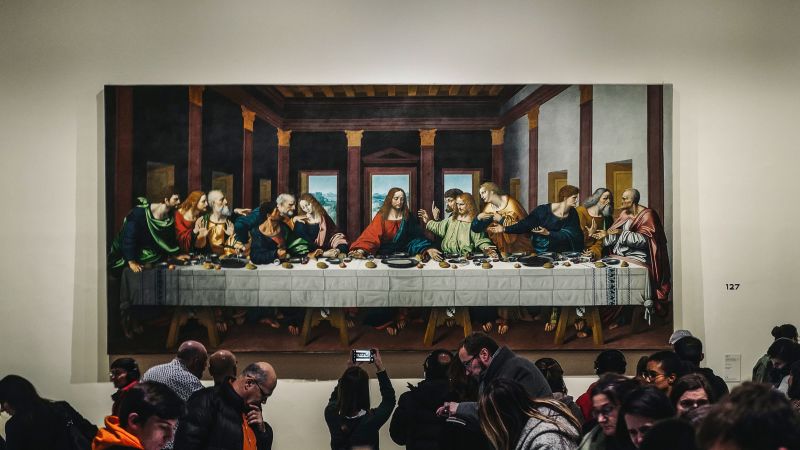Editor’s Note: Sign up for CNN’s Wonder Theory science newsletter. Explore the universe with news on fascinating discoveries, scientific advancements and more.
CNN
—
“Old Masters” such as Leonardo da Vinci, Sandro Botticelli and Rembrandt may have used proteins, especially egg yolk, in their oil paintings, according to a new study.
Trace quantities of protein residue have long been detected in classic oil paintings, though they were often ascribed to contamination. A new study published Tuesday in the journal Nature Communications found the inclusion was likely intentional — and sheds light on the technical knowledge of the Old Masters, the most skilled European painters of the 16th, 17th, or early 18th century, and the way they prepared their paints.
“There are very few written sources about this and no scientific work has been done before to investigate the subject in such depth,” said study author Ophélie Ranquet of the Institute of Mechanical Process Engineering and Mechanics at the Karlsruhe Institute of Technology in Germany, in a phone interview. “Our results show that even with a very small amount of egg yolk, you can achieve an amazing change of properties in the oil paint, demonstrating how it might have been beneficial for the artists.”
Simply adding some egg yolk to their works, it turns out, could have long-lasting effects that went beyond just aesthetics.
Compared with the medium formulated by ancient Egyptians called tempera — which combines egg yolk with powdered pigments and water — oil paint creates more intense colors, allows for very smooth color transitions and dries far less quickly, so it can be used for several days after its preparation. However, oil paint, which uses linseed or safflower oil instead of water, also has drawbacks, including being more susceptible to color darkening and damage caused by exposure to light.
Because making paint was an artisanal and experimental process, it is possible that the Old Masters might have added egg yolk, a familiar ingredient, to the newer type of paint, which first showed up in the seventh century in Central Asia before spreading to Northern Europe in the Middle Ages and Italy during the Renaissance. In the study, the researchers recreated the process of paint-making by using four ingredients — egg yolk,…
Click Here to Read the Full Original Article at CNN.com – RSS Channel – HP Hero…

